Champun
Apisuk, Thailand
Here is how the artist justified the grounds of his performance.:” It’s always better to be on white (for an Asian). My story begins on March 20, 2003. My exhibition in Bangkok was about to be opened. I was arranging my installations when American bombs were falling on Bagdad. Radio in the gallery was on, we listened to the news, friends called to share new information.
A lot of people came to the opening that day. My friends brought along musical instruments. We drank Heineken beer, Beefeater gin and Johnny Walker. I was happy to have friends around. We got really drunk with American hooch.
That evening I announced a plan for my performance on March 29. I decided to quit on the white garment I bought for this purpose in the United States. Then I was reading American poetry.”
The performance was preceded with a lecture during which the artist, using the Gulf War example, made an attempt to delineate who and how much pays for the war. The general conclusion that stemmed from the lecture was that the oil consumers bear all the costs whereas big oil corporations and the American government only generate profits. The performance had a clear anti-American call to the open-minded audience. During the action the artist displayed the inside of his performer’s suitcase on the monitor. At the end he distributed red buds of some exotic plant.
Artysta tak napisał o przyczynach swojego
performance: "Zawsze dobrze być na biało" (dla Azjaty)
Moja opowieść
zaczyna się 20 marca 2003 roku.
Otwarto wtedy moją wystawę w Bankoku. Kiedy
ustawiałem swoje instalacje amerykańskie bomby spadały na Bagdad. Radio w
galerii było włączone, słuchaliśmy wiadomości, przyjaciele dzwonili żeby
podzielić się nowymi informacjami.
Wielu ludzi zjawiło się tego wieczoru na
otwarciu . Moi znajomi muzycy przynieśli instrumenty. Piliśmy Heinekena,
Beefether Gin i Johnny Walkera. Cieszyłem się z obecności przyjaciół na
przyjęciu. Zdrowo urżnęliśmy się amerykańskim alkoholem.
Tego wieczoru
ogłosiłem plan swojego performance na 29 marca. Zdecydowałem się zrezygnować z
białego stroju, który kupiłem do tego celu w Ameryce. Potem czytałem amerykańską
poezję."
Performance zaczął się od wykładu. Artysta wyliczył kto i ile
płaci za wojnę, taką jak pierwsza wojna w Zatoce - wyszło że my, konsumenci
ropy. Zyskują korporacje naftowe i rząd amerykański. Jasne przesłanie
antyamerykańskie dla "myślących ludzi". W trakcie performance pokazywał na
monitorze wnętrze swojej walizki z rekwizytami performera, a na zakończenie
rozdał po czerwonym płatku jakiejś egzotycznej rośliny.
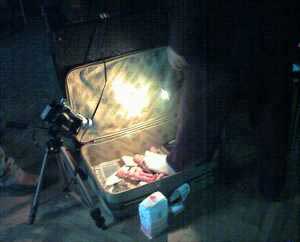
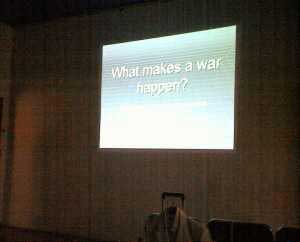
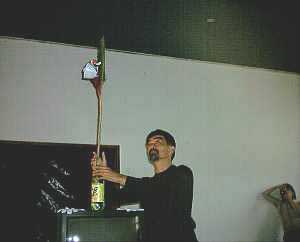
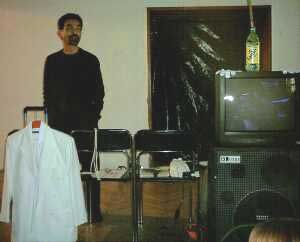
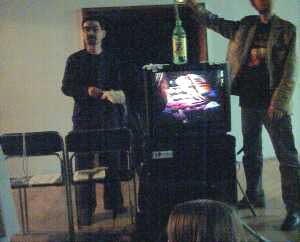
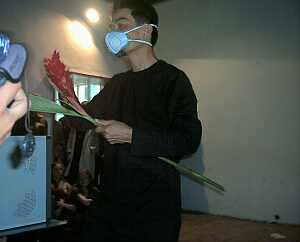

Basra Child - zdjęcie pokazywane na
zakończenie performance.
< < <
back
< < <
www.spam.art.pl






